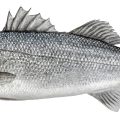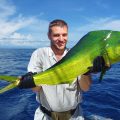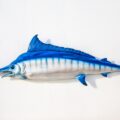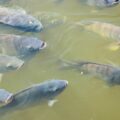Groupers and barramundi differ in habitat, distribution, appearance, weight, and other factors. There are also many notable similarities between groupers and barramundi. For example, both are sequential hermaphrodites, which means many are protogynous and change their sex at some point in life. Both reproduce in similar ways and have similar tastes. However, the differences are still very large.
Genus difference between Barramundi and Grouper
Barramundi, also known as the Asian sea bass, is a catadromous fish in the family Latidae of the order Perciformes. Their scientific name is Lates calcarifer. The literal meaning of the name is “large-scaled river fish.”
On the other hand, “grouper” is the name given to a variety of species of fish in the subfamily Epinephelinae of the family Serranidae under the order Perciformes. There are currently around 160 species of groupers out there. The humpback grouper is known as Barramundi cod, which is why people often mix the two up, but it belongs to completely different classifications from a Barramundi.
How to distinguish between Barramundi and Grouper
There are considerable similarities between the appearance of a grouper and barramundi, given that they are both large fishes with big mouths, but some differences can still be noted to distinguish them.
Barramundi fish can be easily identified with their massive mouths, bigger than a grouper. Saltwater barramundi usually has a silvery body, more on the lighter side of gray, so they can be seen easily in dark waters. Yellow hues are present all over their bodies, mixing with the gray. The yellow color is especially visible on their fins. As for freshwater fish, they typically have a greenish-blue upper body and tail fins that are dark brown to black. The dorsal fins of barramundi are spiny, containing seven to eight strong spines. They have two dorsal fins, the second one containing ten to eleven fin rays. Their heads are pointed, which is a distinct feature for them. They have concave forehead, and their mouth bugles outwards.
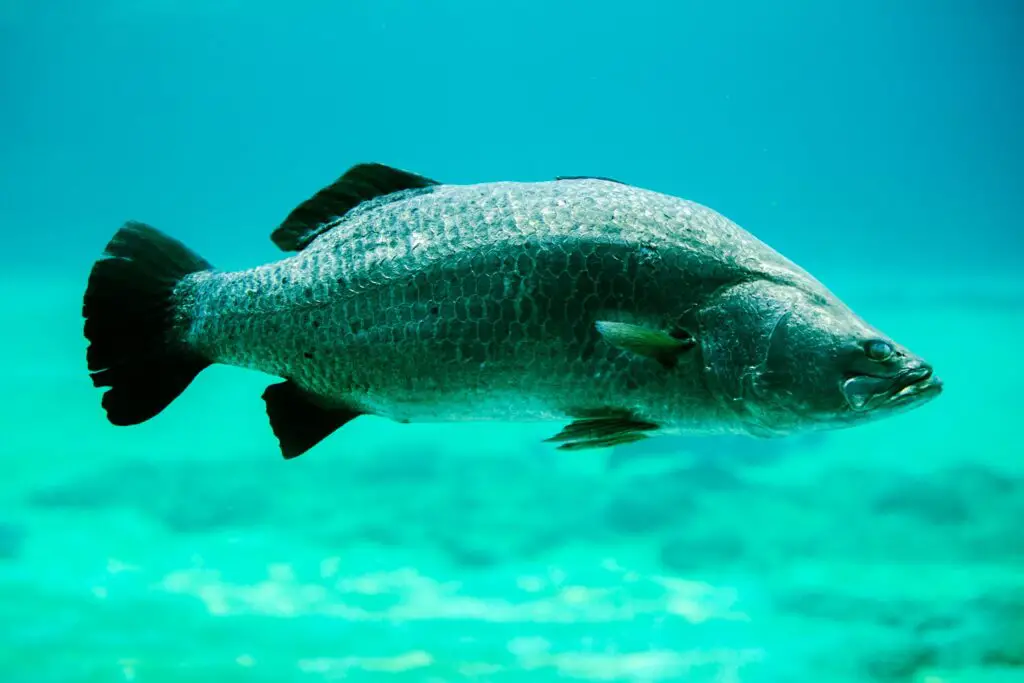
On the other hand, groupers are more recognized by their robust bodies and large mouths. Unlike barramundi’s pointed heads, their heads are round. Their eyes are set high on their broad heads. The soft pelvic fins, round anal fins, and spiny and elongated dorsal fins are set way back on the body.
Groupers come in various colors. They can have a grayish-brown body, an olive-like yellow body, or a very dark, blackish body. They can also have reddish and greenish hues on their bodies. No matter their body color, there are usually dark markings or spots all over the body. The fins are black in color; the edges can be deep blue. There are many types of groupers, each carrying its own unique appearance.
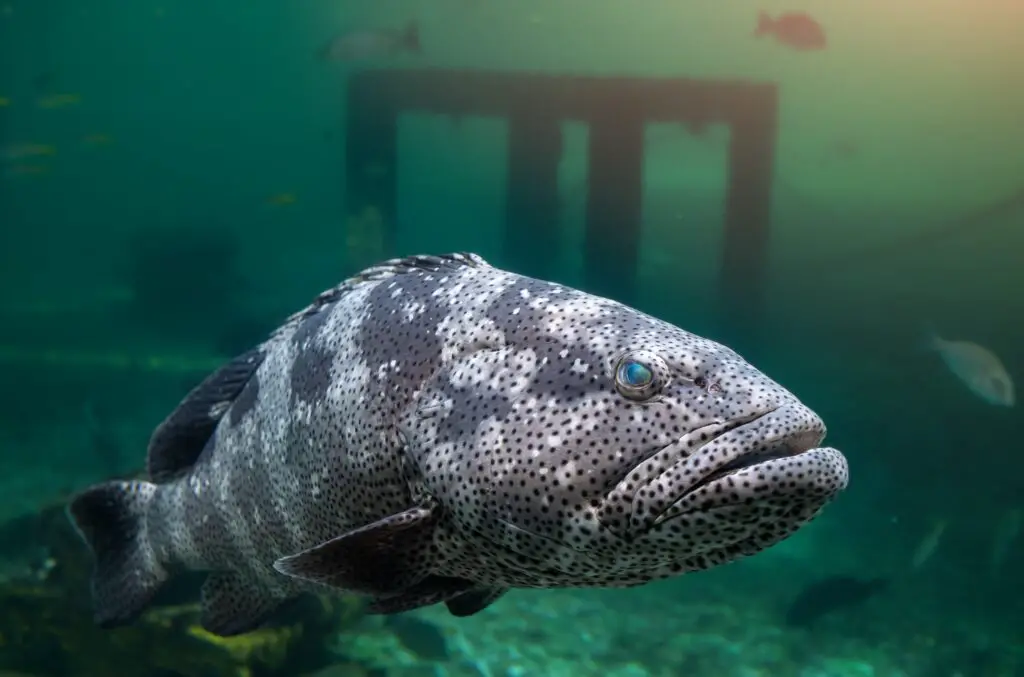
Barramundi and Grouper habitat and distribution difference
Barramundi can be found in both freshwater and saltwater. They are seen in streams, rivers, lakes, billabongs, estuaries, and coastal waters. Another name for barramundi is the Asian sea bass, so their distribution is more or less limited to the continent’s surroundings.
They can be found throughout the coastal areas from the Persian Gulf to China and southern Japan. They are also distributed in the waters south of Papua New Guinea and northern Australia. Western Australia, they are found north of Exmouth Gulf, but their population density is higher in Kimberley.
On the other hand, the range of groupers is wider. They are distributed over the Gulf of Mexico and the Florida Keys in the United States, the Bahamas, the Yucatan peninsula, the majority of the Caribbean, as well as the Brazilian coast. Some groupers have been caught off the coast, too, in Massachusetts and Maine of New England.
There are many species of groupers, and they’re all spread around in different places. For example, the Giant Grouper can be found across the Indo-Pacific, starting from the Red Sea and the eastern coasts of Africa towards Algoa Bay in South Africa. Furthermore, they are seen across the Indian Ocean into the Western Pacific Ocean as far east as the Pitcairn Islands and Hawaii.
Groupers are usually found in the rocky and coral reefs of the tropics and sub-tropics all around the world. They hang out near ledges, shipwrecks, and other concrete underwater structures stuck at the bottom of the bed.
Size and weight comparison between Barramundi and Grouper
Groupers can grow up to a huge size. They can be more than a meter long after fully maturing. The largest grouper size ever recorded was an Atlantic grouper of length 2.43 meters, which is much longer than an average human. Given their height, they also weigh a lot. The highest recorded weight was 399 kilograms or 880 pounds. On average, most species of groupers weigh around 100 pounds, and their length stays around three to four feet.
On the other hand, though barramundi can grow up to a length similar to a grouper, they are not nearly as close regarding weight. The maximum recorded length of a barramundi was 2 meters. But their weight usually doesn’t exceed 50 kilograms. Most barramundi weighs around 10 to 25 kilograms. So compared to grouper, they have much less flesh density and are thinner.
Do Barramundi and Grouper taste the same?
There is not much notable difference between the tastes of Barramundi and Groupers. Both fish are white-fleshed and tender to chew on. They come with a mild and slightly sweet flavor, which makes it possible to cook them using a versatile range of seasonings and still make it work. Moreover, both types of flesh have a firm texture. There is no fishy and muddy taste either, though they’re both bottom feeders. Both are rich in omega-3 fatty acids, but barramundi carries a lower number of calories. Given that some grouper species are currently endangered, it’s a responsible decision to settle for barramundi as an alternative. In conclusion, there are many similarities between barramundi and groupers, but they can still be distinguished well. Barramundi and Barramundi cods are completely different fishes!

